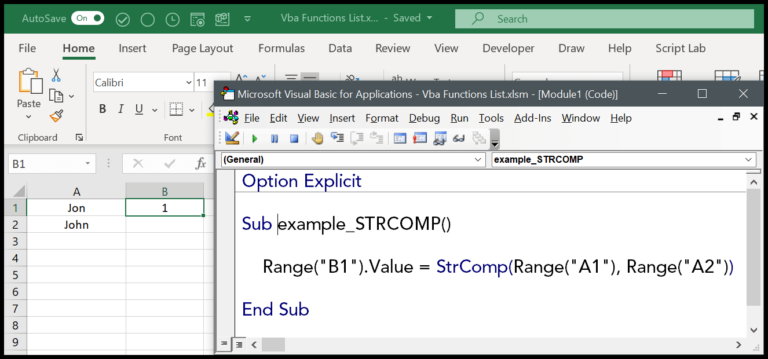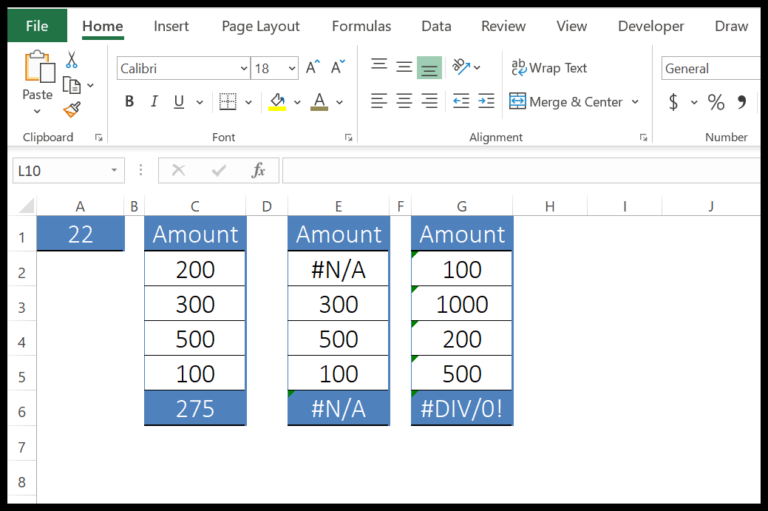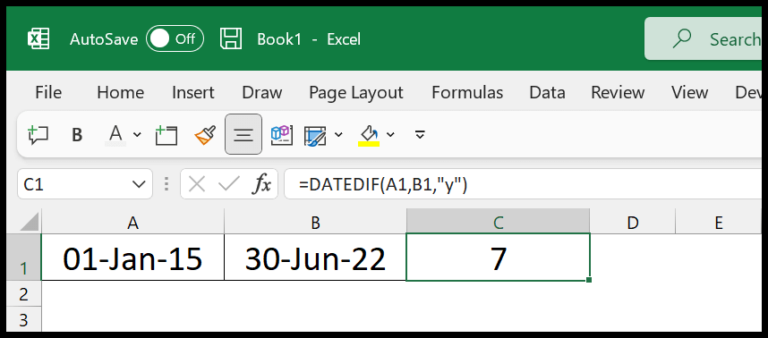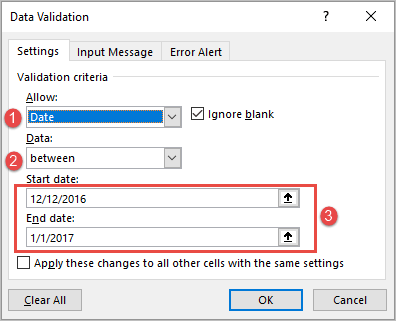In the competitive landscape of B2B SaaS, a well-structured sales funnel is the backbone of a successful sales strategy. It maps out the journey a potential customer takes, from the initial discovery of a service to the final purchase decision. At the heart of it, the sales funnel is about nurturing potential leads — guiding them through various stages, beginning with awareness. This stage is critical as it’s where the target audience gets acquainted with the SaaS product, typically through content marketing, social media interactions, or other forms of outreach.
As the name suggests, the interest phase is where prospects demonstrate a keenness to learn more about the SaaS product. It’s a pivotal moment in the funnel, as the quality of engagement during this phase can greatly influence the progression to subsequent stages. For SaaS companies, this is an opportunity to showcase the unique features and benefits of their software, illustrating how it solves specific problems or improves processes for other businesses.
Each phase of the B2B SaaS sales funnel is designed to work in harmony, gradually qualifying leads and building up to the point where a prospect is ready to commit. However, creating an effective funnel isn’t just about moving prospects from one stage to the next; it’s also about maintaining the interest of potential customers during the journey. It’s the delicate balance of informative and persuasive tactics that often dictates the success of the funnel, and by extension, the growth of the SaaS business.
Understanding B2B SaaS Sales Funnels
In the world of B2B SaaS, understanding the nuances of the sales funnel is integral to converting leads into customers. The sales funnel offers a framework for nurturing prospects at each stage of the buying journey.
Defining the B2B SaaS Sales Funnel
A B2B SaaS sales funnel is a structured process that businesses use to guide prospects from initial awareness to the final purchase decision. This funnel is essential for any SaaS company looking to streamline its sales process and increase conversions. The typical stages of such a funnel include:
- Awareness: Potential customers become aware of the SaaS product.
- Interest: Prospects show interest by engaging with content or signing up for a trial.
- Decision: Evaluations and comparisons are made as the prospect considers committing.
- Action: The prospect converts, deciding to purchase the service.
Importance of a Tailored Sales Funnel for SaaS
Every SaaS company’s funnel should be tailored to reflect its unique sales cycle and customer journey. For SaaS businesses, the funnel is not a one-time transaction route; it’s an ongoing cycle due to the subscription-based nature of these products. Developing a tailored sales funnel enables effective nurturing of potential customers, ensuring they find the specific value in the offered solution in every interaction. It allows for:
- Improved lead qualification: By understanding where the prospect stands within the funnel, one can tailor the communication to compel them to move to the next stage.
- Increased conversion rates: A well-designed funnel that resonates with the SaaS model can turn leads into customers more efficiently.
- Retention and growth: Even after the action stage, the funnel helps in retaining customers and upselling or cross-selling services.
A tailored B2B SaaS sales funnel is a stepwise pathway that leads a potential customer to make a well-informed decision, ensuring a mutually beneficial outcome for both parties.
Crafting Your B2B SaaS Strategy
Crafting a B2B SaaS strategy hinges on understanding the specific challenges faced by the target audience and articulating a compelling value proposition.
Identifying Target Audience Pain Points
Every B2B SaaS marketing strategy should start with clear insights into the customer’s pain points. Sales teams can pinpoint these issues by:
- Engaging in customer interviews and surveys to gather firsthand information.
- Analyzing market trends and competitive insights to identify common industry challenges.
- Utilizing data analytics to track user behavior and feedback for existing clients.
By focusing on these strategies, a company can ensure its product serves as a solution to real problems, making it essential to their target audience.
Developing a Messaging Strategy
Once the pain points are identified, it’s crucial to develop a messaging strategy that communicates the product’s value effectively. This includes:
- Creating key message points that are consistent across all channels.
- Developing case studies and testimonials that showcase the product solving similar issues.
- Utilizing content marketing to educate potential clients on the product’s benefits and features.
Messaging should aim to resonate with the target audience by aligning the SaaS solution closely with their needs, ensuring it stands out as the superior choice.
Top of the Funnel Dynamics
At the top of the funnel, businesses focus on increasing visibility and drawing prospects’ attention. It’s about creating a strong first impression, so content, social media, SEO, and PPC play key roles in this stage.
Generating Awareness Through Content
At this stage, content is king. Companies craft informative blog posts, insightful infographics, and engaging videos to introduce potential customers to their brand. The aim is to inform rather than sell, setting the stage for further engagement.
Examples of Awareness Content:
- Blog Posts: “5 Ways Our SaaS Can Streamline Your Workflow”
- Infographics: Visual breakdowns of industry statistics
- Videos: Product explanations that highlight benefits without hard selling
Content Types:
- Instructive: Tutorials that solve common industry challenges
- Informative: White papers that provide in-depth analysis
- Engaging: Interactive quizzes relevant to the business domain
Using Social Media to Engage Prospects
Social media platforms are tools for initiating conversations and building relationships. Businesses use these channels to share their content, respond to queries, and stay active within their prospect’s view.
Social Media Dynamics:
- Frequency: Regular posts keep a brand on the prospect’s radar
- Engagement: Likes, shares, and comments broaden visibility
- Community: Joining relevant groups and forums to add value
Leveraging SEO and PPC for Visibility
SEO and PPC are the dual engines of online visibility. While SEO optimizes content for organic search results, PPC campaigns allow for targeted ad placement in search engines and across social media platforms.
SEO Focus:
- Keywords: Identifying and targeting phrases prospects are searching for
- Content Optimization: Ensuring content is SEO-friendly to rank higher
PPC Strategy:
- Ad Copy: Clear and enticing messaging to draw clicks
- Targeting: Selecting demographics and keywords for precise ad delivery
Middle of the Funnel Engagement
Engaging leads effectively in the middle of the funnel is crucial as this phase maintains interest and builds the trust necessary for conversion. This engagement revolves around understanding the challenges and interests of the leads to present the most relevant solutions through targeted content.
Effective Lead Nurturing Practices
At the middle of the funnel, companies should nurture their leads with a series of targeted communications, often using email marketing strategies. An effective lead nurturing campaign might look like this:
- Personalized Emails: Tailor content to individual leads based on their previous interactions and behaviors.
- Segmented Campaigns: Group leads by their interests or demographics and send relevant information to each segment.
- Consistent Follow-ups: Regular but non-invasive follow-ups remind the leads of the company’s value proposition.
Lead nurturing is not just about pushing for a sale; it’s about building a relationship. They should be given enough information and engagement opportunities to see the service as a solution to their specific needs.
Educational Content and Webinars
Webinars and educational content are powerful tools for keeping leads engaged. Here’s how they can be used effectively:
- Blog Posts: Regularly updated blogs that provide insightful industry analysis or how-to guides maintain interest and position the company as an industry expert.
- Webinars: Live webinars should both educate and encourage interaction. It’s not just about presenting a product, but also about discussing industry trends and answering questions.
Webinars and blog posts can transform a company’s image from being just a service provider to becoming a trusted advisor in its field. By offering value in the form of knowledge, companies create a connection with leads that goes beyond the initial contact, fostering trust and keeping the interest alive.
Conversion and Decision Making
In the B2B SaaS sales funnel, conversion is the lifeblood that sustains growth, and decision-making is the critical juncture where prospects commit. Smart strategies around product demos and client stories can significantly boost conversion rates.
Conducting Product Demos and Free Trials
When it comes to conversion, nothing beats the tangible experience of a product demo or a free trial. Prospects are savvy; they prefer testing the waters before making a decision. Demos provide a hands-on opportunity to see the SaaS solution in action, addressing specific pain points and showing real-time application. Free trials, on the other hand, offer a low-risk entry point where potential clients can explore features at their own pace. This firsthand experience is an invaluable tool in nudging them towards a subscription decision.
-
Key components of an effective demo:
- Showcase core features relevant to the prospect’s challenges.
- Highlight customizability and integration capabilities.
-
For free trials, it’s crucial to:
- Ensure easy onboarding to facilitate immediate use.
- Offer support to guide users through the trial period.
Each touchpoint should aim to convert interested prospects into paying customers, and both demos and trials can be powerful conversion tools when executed thoughtfully.
Showcasing Case Studies and Testimonials
Case studies and testimonials are gold mines when drawing prospects closer to a conversion decision. They act as social proof, adding credibility and trust to the product. Prospects often look for evidence that others—especially those in similar industries—have successfully implemented the SaaS and achieved measurable results.
-
A compelling case study includes:
- Quantifiable outcomes, illustrating clear ROI from using the SaaS product.
- A narrative that resonates with the prospect’s situation.
-
Testimonials should highlight:
- Satisfaction with the product and support.
- Specific benefits realized by the user.
When these stories and endorsements align closely with the prospects’ needs and resonate with their industry challenges, they can powerfully influence the decision-making process and improve conversion likelihood.
Bottom of the Funnel Techniques
The bottom of the sales funnel is where the real magic happens—it’s where hard-earned leads are converted into paying customers. This stage is crucial for maximizing conversion rates and increasing the lifetime value of a customer through strategic closing and upselling techniques.
Optimizing the Onboarding Process
Smooth onboarding is essential for converting new customers into loyal users, impacting both initial satisfaction and long-term retention. Companies should create onboarding that is:
- Tailored to Customer Needs: Personalize the onboarding experience to not only show appreciation for the customer’s business but to also address their unique needs and challenges.
- Clear and Educational: Utilize guided tours, video tutorials, and documentation to educate customers about the product features and benefits, ensuring they understand the value proposition.
Checklist for Onboarding:
- Welcome Email
- Account Set-Up Guide
- Product Training Webinars
- Dedicated Support Contact
Closing Strategies and Upselling
Closing the deal requires tactful strategies that ensure the prospect feels they’re making the right choice. For successful closures and upsell opportunities:
- Value Proposition Highlight: Reiterate how the product resolves specific pain points and delivers on its promises, reinforcing the decision to buy.
- Incentives for Immediate Closure: Offer limited-time promotions or discounts to incentivize quick decision-making.
Upselling should be approached as an opportunity to enhance the customer’s success, not just to increase sales. Employ tactics such as:
- Product Extensions or Add-Ons: Suggest additional features that complement the initial purchase.
- Upgraded Plans: Recommend plan upgrades by demonstrating the long-term value and cost savings of a higher-tier plan.
Remember, at the bottom of the sales funnel, the emphasis is on reinforcing the customer’s decision to choose your solution and laying the groundwork for a long-term relationship.
Post-Purchase: Ensuring Customer Retention
After a customer makes a purchase, the goal shifts to keeping them satisfied and engaged. Companies that emphasize good support and continuously analyze customer feedback have better retention rates.
Offering Quality Support and Follow-Up
To maintain customer retention, quality support is crucial. Having a robust customer service system in place ensures that any issues are resolved promptly, which can prevent a one-time buyer from turning into a dissatisfied ex-customer. Follow-up communications, such as satisfaction surveys, are also key practices that reinforce the relationship.
- Proactive follow-ups can help to:
- Identify potential issues before they escalate
- Personalize the customer experience
- Encourage repeat business and new product adoption
Conversion rates are positively impacted when customers feel supported and valued.
Evaluating Customer Feedback and Data
Careful evaluation of customer feedback and data helps a company understand the customer’s journey beyond the sale. By reviewing feedback and analyzing behavioral data, they can uncover areas for improvement and opportunities for additional sales.
- Reviews and feedback gather valuable insights, such as:
- New feature requests
- Common user challenges
- Levels of customer satisfaction
These insights are often made actionable through structured data analysis, directly influencing strategies for retention and leading to more informed product development decisions.
Maximizing Revenue
To scale profitability in B2B SaaS, companies need to keep a sharp eye on their sales funnel’s performance and proactively seek opportunities to expand their customer relationships.
Analyzing Sales Pipeline Metrics
Metrics are crucial indicators of a sales pipeline’s health and potential revenue. The company closely monitors conversion rates and average deal size to understand the efficacy of its sales process. By examining these metrics, one can pinpoint bottlenecks or stages where prospects tend to drop off. Regular analysis enables the team to adapt strategies for better performance and sustained recurring revenue growth.
Strategic Upselling and Customer Lifecycle Expansion
Once a customer is acquired, the focus shifts to maximizing lifetime value. Through strategic upselling, the company introduces customers to higher-tier plans or additional features that align with their evolving needs. This deliberate effort not only boosts revenue but also enhances customer satisfaction and retention. By carefully tracking the customer lifecycle, the company identifies the perfect timing for upsell conversations, ensuring a natural progression that feels beneficial, not forceful.
Sales Funnel Optimization
In the realm of B2B SaaS, mastering sales funnel optimization is essential for boosting conversions and realizing the highest possible return on investment (ROI).
A/B Testing Landing Pages and Calls to Action
To refine their landing pages, companies often employ A/B testing to determine which variations most effectively persuade visitors to take action. By changing elements like headlines, images, and button colors, they can track the performance of each version. Conversion rates serve as a key indicator of success here, guiding businesses to the most effective page elements.
Using Data to Continuously Improve the Funnel
Data isn’t just numbers; it’s the roadmap for making informed decisions about the sales funnel. Businesses scrutinize this data to identify patterns and bottlenecks that could be impeding conversions. Tools like Customer Relationship Management (CRM) systems are pivotal in this effort, allowing companies to track every interaction and optimize each stage of the funnel for improved ROI.
Advanced B2B SaaS Sales Tactics
In the landscape of B2B SaaS sales, fine-tuning sales strategies and employing advanced tactics are pivotal for converting leads into customers. Two standout approaches that leading enterprises adopt are lead scoring systems and account-based marketing.
Implementing Lead Scoring Systems
The lead scoring system serves as a critical component of the SaaS sales funnel, enabling businesses to prioritize potential customers based on their likelihood to convert. They achieve this by assigning scores to each lead using a range of indicators such as demographic information, engagement levels, and behavior on the company’s website or app. Here’s a simple breakdown of how leads might be scored:
- Demographics: Job title, industry, company size
- Engagement: Website visits, content downloads, webinar attendance
- Behavior: Product demos requested, free trials initiated
Implementing a robust lead scoring system allows sales teams to focus their efforts on nurturing the leads that are most prepared to take the next step in the sales funnel.
Using Account-Based Marketing to Convert Higher-Value Leads
Account-based marketing (ABM) is a tailored strategy where sales and marketing teams work in tandem to convert high-value accounts. This involves creating personalized buying experiences for a targeted set of accounts believed to bring in more significant revenue. B2B SaaS sales strategies leveraging ABM might look like this:
- Identify Key Accounts: Use data analytics to select potential customers with the highest revenue potential.
- Create Custom Campaigns: Develop specialized marketing campaigns that speak directly to the challenges and needs of these accounts.
- Engage Across Multiple Channels: Reach out to prospects using various channels — emails, personalized ads, and direct sales outreaches.
By concentrating specifically on these higher-value leads, businesses can effectively allocate their resources and tailor their sales strategies to ensure a higher success rate and potentially larger deals.
Building Brand Authority and Thought Leadership
Building brand authority in the B2B SaaS market is essential to progress from mere visibility to respected expertise. Thought leadership allows a company to influence the marketing funnel by leveraging expertise to create a trusted brand image.
Content Marketing with a Focus on Expertise
Content marketing plays a pivotal role in establishing brand authority. Companies should focus on publishing insightful blog posts and detailed how-to guides. Each piece of content should showcase their expertise, helping to educate the audience and demonstrate the company’s depth of knowledge in their niche. This strategy not only nurtures leads at the top of the funnel but also establishes credibility which is vital for long-term success.
- Expertise: Highlight unique insights and deep understanding of industry challenges.
- Blog Posts: Regularly publish articles addressing current trends and offering solutions.
- How-to Guides: Create comprehensive guides that solve specific problems or improve workflows.
Engaging with the Community Through Educational Resources
Interaction with the community solidifies a SaaS company’s standing as a thought leader. Companies should prioritize creating educational resources, such as webinars and case studies, that provide real-world examples of how their services can solve industry problems. This level of engagement demonstrates a willingness to support the broader community, not just their customer base, and often translates to increased trust and authority.
- Webinars: Host sessions that delve into industry topics; connect and learn from the community.
- Case Studies: Share customer success stories that reflect the company’s impact and reinforce reliability.
Frequently Asked Questions
In this section, one will find common inquiries into the complexities of structuring and optimizing B2B SaaS sales funnels, aiming to enhance the understanding and efficiency of their sales process.
How do you structure a sales funnel for B2B SaaS companies?
A sales funnel for B2B SaaS companies typically starts with awareness, progresses through interest and evaluation, and culminates in a purchase decision. Effective funnels also include post-purchase stages like retention and advocacy.
What conversion rates should you aim for at each stage of a B2B SaaS sales funnel?
Desirable conversion rates can vary widely in B2B SaaS, but companies should aim to continuously improve their conversions at each stage. Specific rates will depend on industry benchmarks and historical data.
Which metrics are crucial to track for optimizing a SaaS sales funnel?
Important metrics include lead conversion rates, customer acquisition cost (CAC), customer lifetime value (CLTV), churn rate, and funnel drop-off rates. Tracking these can pinpoint areas for improvement.
What are some common strategies to improve conversions in a B2B SaaS sales funnel?
Effective strategies may include enhancing the quality of lead magnets, implementing targeted content marketing, refining sales messaging, and personalizing customer interactions. Optimizing each stage for the target audience is key.
How can marketing and sales be aligned effectively within a SaaS funnel?
Alignment is achieved by clear communication of shared objectives, joint strategy planning, and the use of shared metrics and CRM systems to ensure both teams are working towards the same goals.
Can you provide examples of successful sales funnel strategies in the B2B SaaS industry?
Successful strategies include offering free trials, creating educational content to build trust, utilizing customer testimonials, and deploying retargeting campaigns to re-engage leads that have cooled off.




